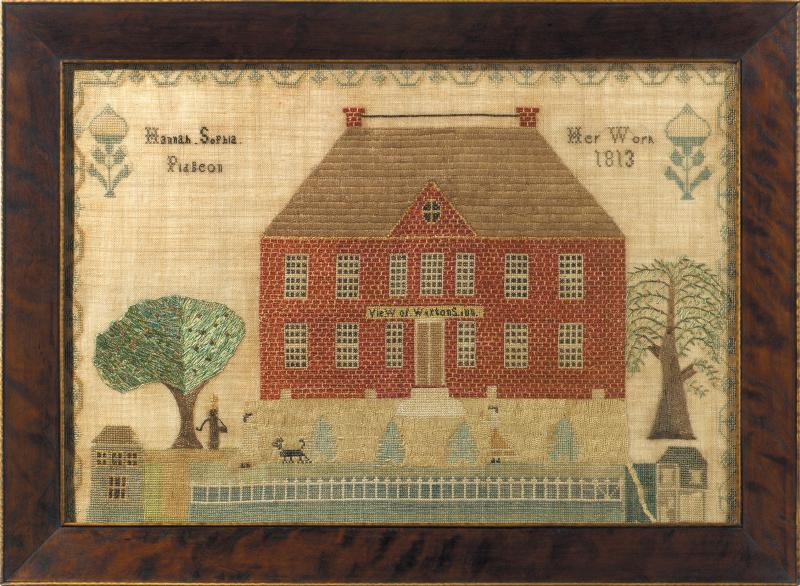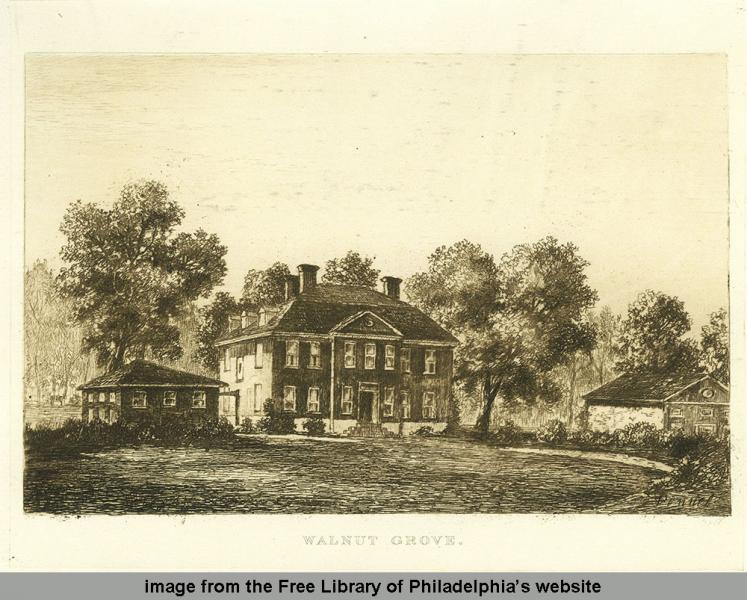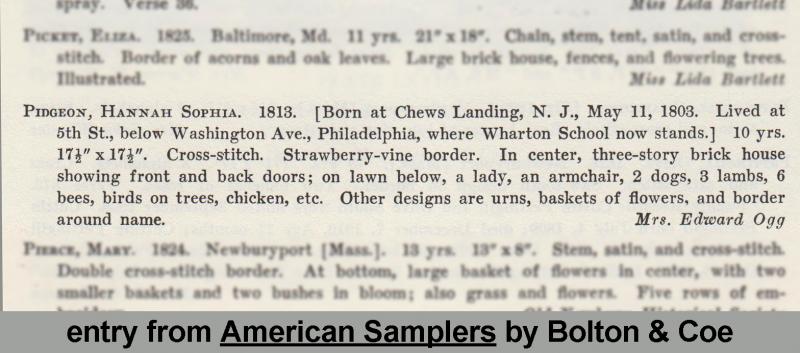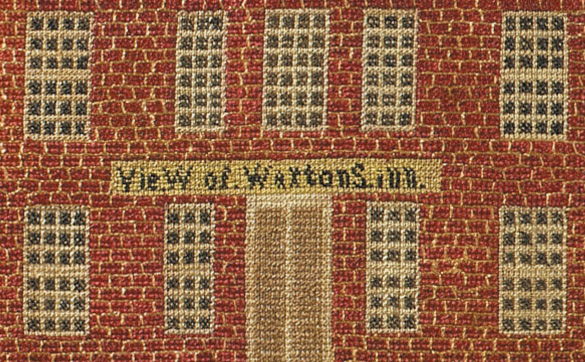
A very few samplers offer not only excellent needlework, exceptional composition and strong aesthetic appeal, but a rich and compelling social history as well. This sampler, a “View of Warton’s Inn” by Hannah Sophia Pidgeon, is one of those. Hannah worked this outstanding sampler, depicting on it a very large and very detailed portrait of Wharton’s Inn [View of Warton’s Inn], the 18th century country seat of Joseph Wharton which was located at what is now 5th Street and Washington Avenue in South Philadelphia.

This grand and important house, called Walnut Grove in the period, was built on a large tract of land circa 1735 as a country home for Joseph Wharton (1708-1776), noted Quaker merchant of Philadelphia and of the esteemed Wharton family. Upon the British occupation of Philadelphia in 1777, the house was seized and then used by royal officers. It must have been thought to be the perfect setting for the Mischianza, the extravagant and lavish celebration given by the British to honor General Sir William Howe, which took place at this house and on its grounds, extending east to the Delaware River. The Mischianza was an extravagant celebration that took place on May 18, 1778 in honor of the retirement of General Howe, commander-in-chief of the British military in America. The day began with a sailing regatta on the Delaware River, included a 17-gun salute from British Warships, continued with a parade, a jousting tournament and culminated with a ball in the Wharton home and fireworks.
The Wharton family regained occupation of the property and after Joseph Wharton’s death, the house and some of the land were inherited by his son, Isaac Wharton and then to his son, Thomas Wharton. By 1823, it was left to the “Guardians of the Poor of the City, Southwark and the Northern Liberties.” The mansion was used for other purposes as well, including a school house, and was demolished in 1862 to build a more spacious school.
Hannah was born on May 11, 1803 and made this sampler when she was just ten years old. She lived nearby the Wharton property and depicted the house in a highly detailed fashion with every brick designated and all its heavily mullioned windows accounted for.

Interestingly, she worked another sampler, also in 1813, and this was recorded in the 1921 publication, American Samplers by Bolton & Coe (Boston, The Massachusetts Society of the. Colonial Dames of America). It was noted in that book that Hannah had lived at 5th Street below Washington Ave and that the residence was nearby the then location of Wharton School.
Her parents were Christopher and Margaret Pidgeon, who were married at Old St. Paul’s Church, Philadelphia in 1791. Christopher Pidgeon (1768-1819) was a cabinetmaker working at 122 S. 2nd Street, noted in a city directory of 1793 and near 2nd & Catherine Streets in 1798 and 1799. He served in the War of 1812 as a private in the 1st Regiment Artillery of Pennsylvania. Hannah married Samuel M. Welsh, a sea captain who was born in New Jersey circa 1812. They remained in Philadelphia and had four daughters. Hannah died on February 24, 1894.

This highly appealing sampler displays the impressive Wharton house and lawn in a delightfully folky representation. It includes two female figures and a dog on the fenced-in front lawn, comingling with small conifers. Two larger trees, a well pump and outbuildings flank the scene. The visual activity of this comprehensive view is well balanced by the space Miss Pidgeon provides around the roofline, and her inscription. A classic border and a pair of flowers complete her work. The care that Hannah lavished onto her sampler and the story of the Wharton house are wonderful indications that this house was held in high regard to both ranking officers and to young schoolgirls, British and Americans alike.

